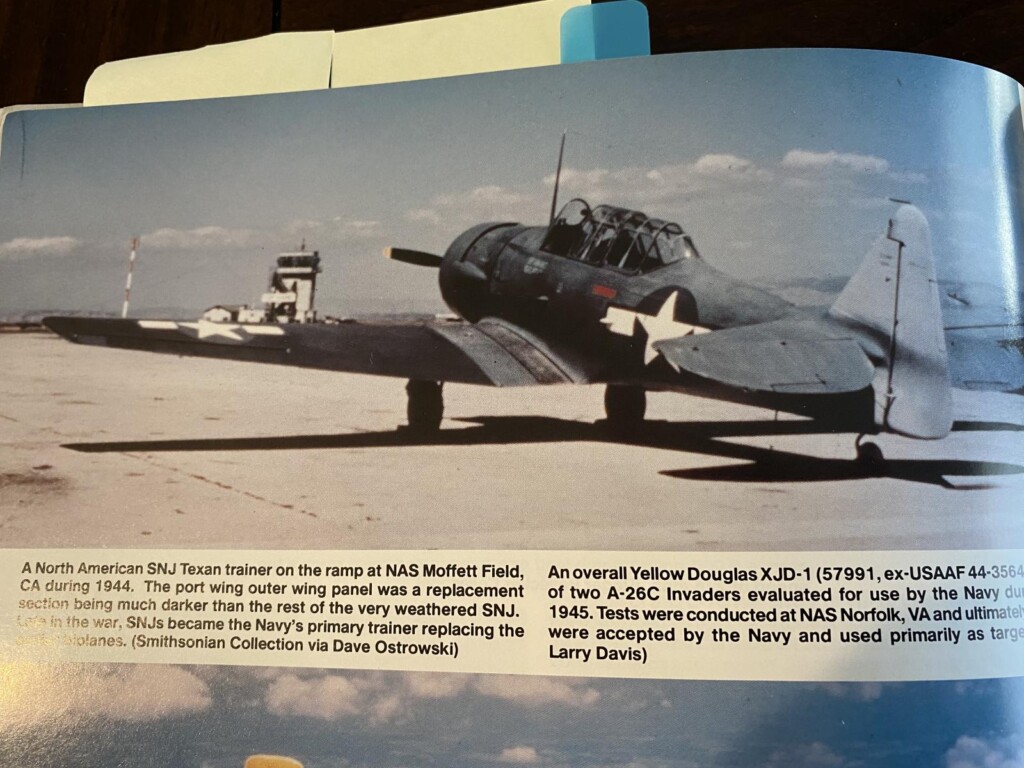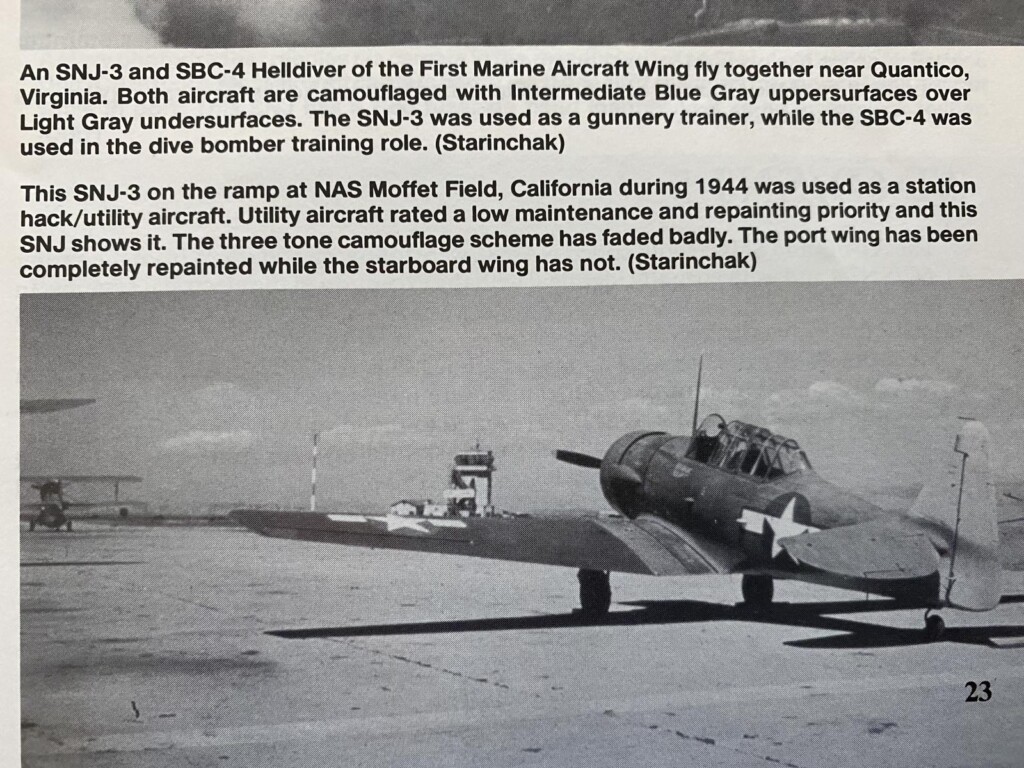The cool thing about this group is it gives me a lot of latitude to build models on my to-do list while still working within the group. Having been an instruction pilot for 20 years, I really like building trainers, and the T-6/SNJ is my favorite. I came across a picture in Sullivan's book "Golden Wings" of an SNJ-3 Texan at Moffett Field in California. I was immediately drawn to this particular airplane because it has an extremely weathered finish. The photo in Sullivan's book is in color, and I found the same photo (in black and white) in 3 other books I have in my library. Every caption gives a different reason for the weathered finish on this plane, as well as the paint scheme(s) that is displayed on the plane. There are also 3 different explanations for the dark, new-looking left wing.
-

1. Color photo from Sullivan's book
-

1. Black and white photo from Squadron's T-6 Texan in Action
My first task was to figure out the steps which lead to this bedraggled paint scheme. This is purely conjecture on my part, but it does explain the various paint colors on the plane. Figuring out how the plane got in this condition also helps me plan my eventual paint scheme. Here's my story for the plane, feel free to jump in. So, here's what I think (remember, I am not an expert):
- SNJ-3s began entering the inventory in 1941
- The plane probably arrived at Moffett in the 2-tone Blue/Gray over Light Gray scheme
- This plane is identified as a "station" plane, which means it was used as a utility plane by the airfield and probably didn't get a lot of attention paid to its paint and finish.
- At some point, the plane was repainted in the 3-tone paint scheme: Sea Blue over Intermediate Blue over Insignia White. I came to this conclusion because the tail is a lighter color than the upper fuselage, which would match this color scheme.
- The 3-color paint scheme became extremely weathered, making it look very patchy, and possibly allowing some of the previous paint scheme to show through.
- At some point, the left wing was damaged and replaced with a new wing which was already painted in the late war scheme of Sea Blue, which appears very dark compared to the rest of the plane. One source said that the wing was darker because it was repainted and they never got around to painting the rest of the plane. This doesn't make sense to me. I think a replacement wing in the darker color is more likely, especially since the dark paint stops at the exact point where a new wing could be bolted on.
So, that's my plan for the paint.
The model:
I probably have 9 or 10 T-6s from 4 or 5 different manufacturers. For the purpose of this build, I am ignoring kits that are hard to find, such as the Aurora kit, and others. Finding PE and masks might be a chore, especially for old kits, until your realize that all of these kits really only come from two different molds. According to Scalemates, one line was started by Occidental in 1998, and was reboxed and re-released by Heller, Italeri, Belcher Bits, Modelcraft, and Modelismo. The Monogram line started in 1979, and was reboxed and re-released by Revell and Hasegawa. All of the models are basically the same with small changes in parts over the years. The big difference for my purposes is the canopy. The T-6G had a canopy with fewer frames on the side of the canopy, while earlier planes had a canopy with more frames. Some of the kits have both sets of canopies included, while others include only the later canopy. I have a Revell and a Modelcraft kit that have both canopies, so which one I will use will be a game-time decision. The good news is that I have masks for the Italeri kit, which should fit all of the other models from the other manufacturers. I also have PE for the Occidental kit, which should fit the others in the lineage. I also have masks for the Revell versions. I am leaning toward Modelcraft kit to build, but the parts in the Modelcraft and the Revell kit look identical. Decals will come from the spares, since the markings are very generic.
8 additional images. Click to enlarge.